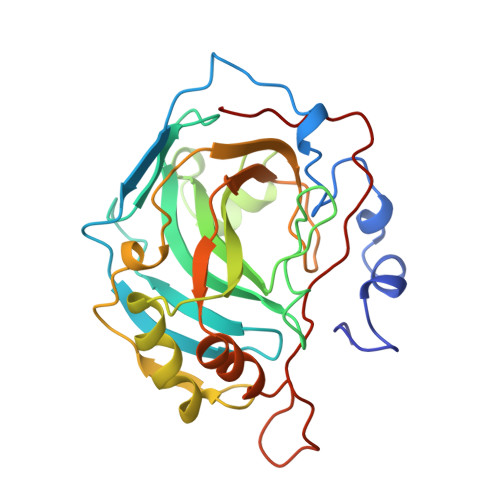Structures of murine carbonic anhydrase IV and human carbonic anhydrase II complexed with brinzolamide: molecular basis of isozyme-drug discrimination.
Stams, T., Chen, Y., Boriack-Sjodin, P.A., Hurt, J.D., Liao, J., May, J.A., Dean, T., Laipis, P., Silverman, D.N., Christianson, D.W.(1998) Protein Sci 7: 556-563
- PubMed: 9541386
- DOI: https://doi.org/10.1002/pro.5560070303
- Primary Citation of Related Structures:
1A42, 2ZNC, 3ZNC - PubMed Abstract:
Carbonic anhydrase IV (CAIV) is a membrane-associated enzyme anchored to plasma membrane surfaces by a phosphatidylinositol glycan linkage. We have determined the 2.8-angstroms resolution crystal structure of a truncated, soluble form of recombinant murine CAIV. We have also determined the structure of its complex with a drug used for glaucoma therapy, the sulfonamide inhibitor brinzolamide (Azopt). The overall structure of murine CAIV is generally similar to that of human CAIV; however, some local structural differences are found in the active site resulting from amino acid sequence differences in the "130's segment" and the residue-63 loop (these may affect the nearby catalytic proton shuttle, His-64). Similar to human CAIV, the C-terminus of murine CAIV is surrounded by a substantial electropositive surface potential that may stabilize the interaction with the phospholipid membrane. Binding interactions observed for brinzolamide rationalize the generally weaker affinity of inhibitors used in glaucoma therapy toward CAIV compared with CAII.
- Roy and Diana Vagelos Laboratories, Department of Chemistry, University of Pennsylvania, Philadelphia 19104-6323, USA.
Organizational Affiliation:



















